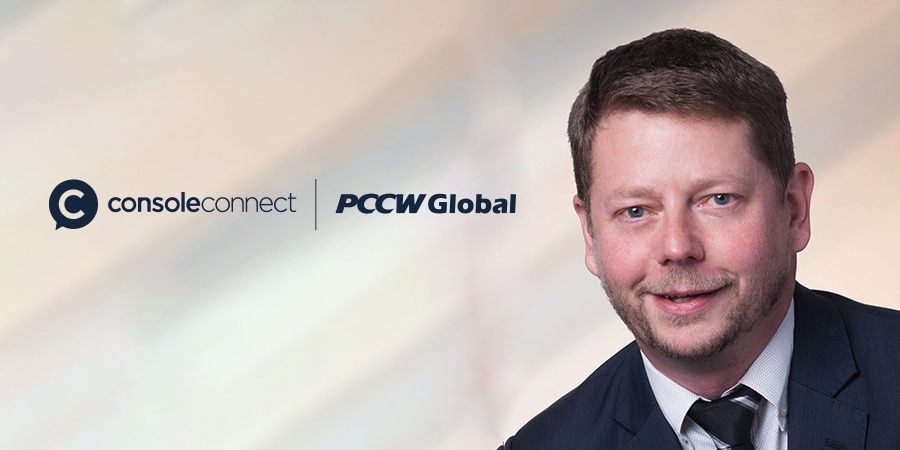Network automation continued to transform the telecoms industry this year. Console Connect | PCCW Global, CTO, Paul Gampe, looks back at 2022 and shares what’s on his roadmap for 2023.
What have been some of the highlights for Console Connect in 2022?
Our automation journey has really accelerated this year. We’ve taken some big steps to extend the reach of Console Connect, which is now available in more than 900 data centers worldwide, and also launched some exciting new products.
The launch of CloudRouter in April, for example, has been a game changer for our users, who can now automatically create enhanced Layer 3 routing among their different network points. This means they can connect any cloud to any cloud without the need for additional hardware.
We’ve also migrated more PCCW Global services to the platform, such as our leading IP transit service (AS3491), which can now be provisioned, controlled and managed in real time and on demand. We are making further enhancements to this offering in the coming months that will offer users more choice when it comes to their pricing model.
This year, we also launched a new partner program called PartnerConnect, which has some exciting partner opportunities for service providers to resell or refer these solutions from Console Connect.
Moving forward into 2023, we are exploring further ways to increase the availability of Console Connect at the network edge and give our users greater control over the path of their traffic from source to destination.
What is on your technology roadmap for 2023?
We are currently exploring ways to leverage our experience in mobility to deliver new solutions for Console Connect users.
For example, the security of IoT devices is an enormous challenge for many organizations, especially as they look for affordable and secure ways to connect IoT devices to the public cloud.
Console Connect users can, today, log in to the platform to order and manage their global IoT SIMs in over 100 countries worldwide. But we are also developing ways for our users to easily manage and control their IoT devices at the network edge, so that they can create secure connections between their devices and a local cloud provider for things like device upgrades.
Looking further ahead, we plan to extend our automation capabilities to Layer 1 and enable our users to select which subsea cable route they would like to transverse their traffic.
This solution could have some really strong use cases for carriers, which could easily purchase capacity on a subsea cable system if they’ve experienced a cable break on one of their existing routes. They will be able to do this all on-demand and using our pay-as-you-go model, which means they avoid that traditional procurement cycle.
We expect this service to be ready in early 2023.
How are APIs delivering new value and opportunities for carriers?
There is a growing trend among carriers to leverage APIs to orchestrate connectivity and increase interoperability between different networks.
Earlier this year, for example, we completed the first stage of an API-led integration between the Console Connect platform and the Colt On Demand platform. By integrating these two SDI platforms via an API, we are able to create seamless quoting, ordering and provisioning of on-demand services between two high-performance networks in real time.
This type of end-to-end automation will unlock new efficiencies, value and innovation for carriers and their customers.
Moving forward, we want to lower the barriers to adoption for other carriers to use our API and make it easier for them to deliver destinations on the Console Connect network to their customers.
We are currently enhancing our API capabilities with things like authentication tokens and improved API documentation, which will create a better experience for developers working with Console Connect.
How is Console Connect working alongside the industry to introduce more automation on the settlement side?
Carriers can already see the benefits of automation when it comes to service provisioning, but the focus is starting to shift to how we can automate more on the settlement side.
In partnership with the Communications Business Automation Network (CBAN), PCCW Global has moved into the production stage with its use of distributed ledger technology that is specifically designed to tokenize assets that can lead to automated reconciliation.
Working with other carrier partners, we’ve already tokenized our service records and can automatically reconcile to a smart-contract negotiated threshold. Next, we will look to move our entire settlement workflow to a distributed ledger.
We have invested heavily in understanding how this distributed ledger technology works and have built our own system in parallel to avoid vendor lock-in.
There are significant long-term drivers for deploying this type of technology, and the message I would like to convey to the carrier community is that if you haven’t got started with this yet, then you are losing your first mover advantage.
The impact of distributed ledger technology on your business is high — not just in terms of the actual deployment of the technology, but also with how it fundamentally changes the way we work.
It’s been fantastic to see the progress that we are making with blockchain innovation, with our partners recognized recently at both the Global Carrier Awards and the World Communications Awards.










